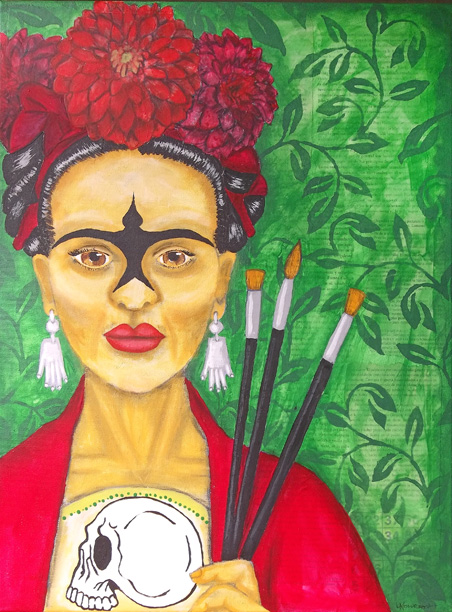
What is a Call For Art?
Generally, a call for art is a request for art submissions, posted by a publisher, gallery, or show organizer.
Calls come in a variety of forms: requests for portfolios, where an artist submits examples of their work; requests for pieces following a specific theme, which are ready to hang and sell; requests for booth or setup photos for festivals.
Right now, I’m not doing art festivals or fairs, so I don’t apply to those. I’m also not doing any calls that request a portfolio, which are usually for some sort of commission work, like public murals. I’ve been focusing on group shows that have a theme, creating pieces to submit, while also building my portfolio.
Where Do You Find Calls For Art?
Calls for art are posted all over the place: on magazine web sites, on gallery social media pages, and on sites specifically designed to help organizations and artists find each other.
My focus has been on local calls at small galleries. My area has a call for art group on Facebook, where people organizing art events can post their calls. I’ve also followed some of the galleries that seem to have regular open calls on Facebook. If that’s your focus, start by Googling art calls in your state or general area, and looking for centralized web sites or Facebook pages that list calls regularly.
Several of the places I’ve applied use CaFE (Call For Entry), a national site where organizations can list their calls, and artists can apply for them. I check the site every so often, to look for calls in my state.
If your focus is on publication rather than shows, most visual publications post calls for art on their web sites. Sometimes, they’re hard to find, so try Googling the publication’s name, and the word submission. That will generally lead to a link to the company’s submission guidelines page.
If you’re more into the big art festivals and fairs, those usually take submissions quite a few months, or even a year, from the show’s opening date. Find the show’s submission page, and get your application in early. Some shows are very competitive, so it might take several tries before you get in.
How Do You Apply?
Most art calls will have very specific requirements included in them. The most important thing you can do is read those requirements, and consider them before submitting. Having been on both the sending and receiving end of art calls, I can honestly say that it’s vital to read and understand what’s being requested, and to submit it right the first time. If someone took the time and trouble to write out what they want, believe them, and do your best to give it to them.
Many calls for local shows will include a list of dates: the deadline for submissions; the date artists are notified of acceptance; the drop off date for pieces; the show opening and closing dates; the artist reception date; the pick up date. Check your calendar, because you’re expected to drop off and pick up promptly, and generally, it’s considered poor form not to show up for the artist reception. Be sure you don’t have conflicts for those dates.
Calls that require photos often limit the number you can submit, and ask for them in high resolution. The photos you submit may not only determine whether your pieces make it into a show. They may be used for promotional purposes in show advertising. Sending good, well-lit, high-res photos of your work when required may get your piece seen by the public on posters and in ads, and also in articles written by local art columnists and bloggers. Take the time to submit good photos that show your work in its best light.
Be sure to send a complete submission package: all the materials that are requested, all at one time. If you’re asked for a photo and description of each piece, including title, size, media and price, then send all that information with each photo. Don’t make the organizer come back to you for more information.
What Happens After I Apply?
When you apply for an art call, be sure to make note of the notification process. While some calls will notify accepted artists via email, others expect the artist to check a web site to confirm their acceptance. Follow whatever instructions you receive, and be sure to deliver your work on time, and pick it up again if it doesn’t sell. Some organizations will charge a storage fee if your work isn’t picked up promptly!
Go to the opening reception, and be sure to seek out a couple of artists you haven’t met yet, and introduce yourself!
What If I Don’t Get Accepted?
Rejection is hard, but you just never know what a show curator is looking for. I try to take rejections as less a statement about my work, and more about whether it was a good fit for the show. Maybe the show already had several pieces similar to mine, or maybe my piece was far removed from what everyone else did. Either way, it’s better not to be in the show than to have my work stand out for all the wrong reasons. Try again, and also try submitting the same piece elsewhere. It takes a few tries to find a good fit, but it’s well worth the effort.
Good luck!
